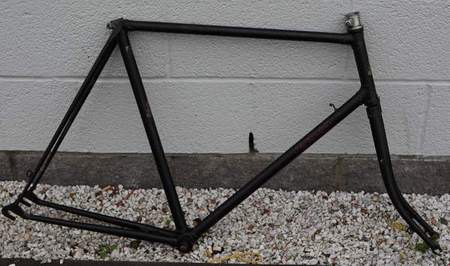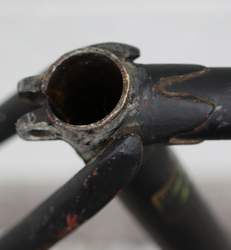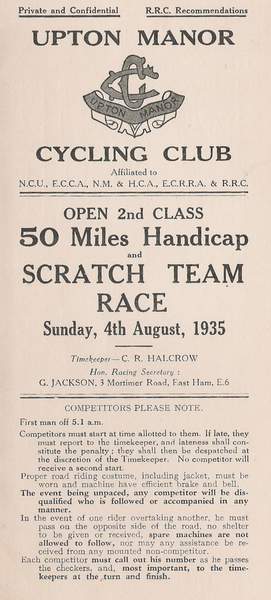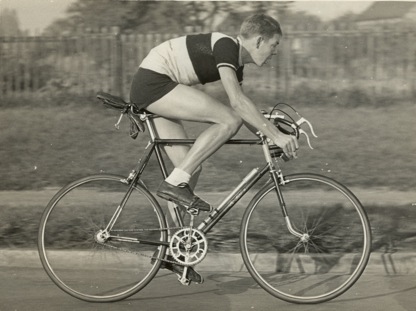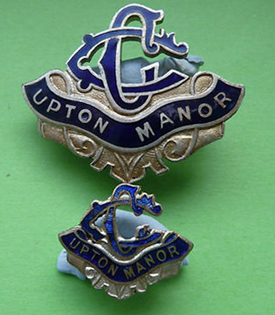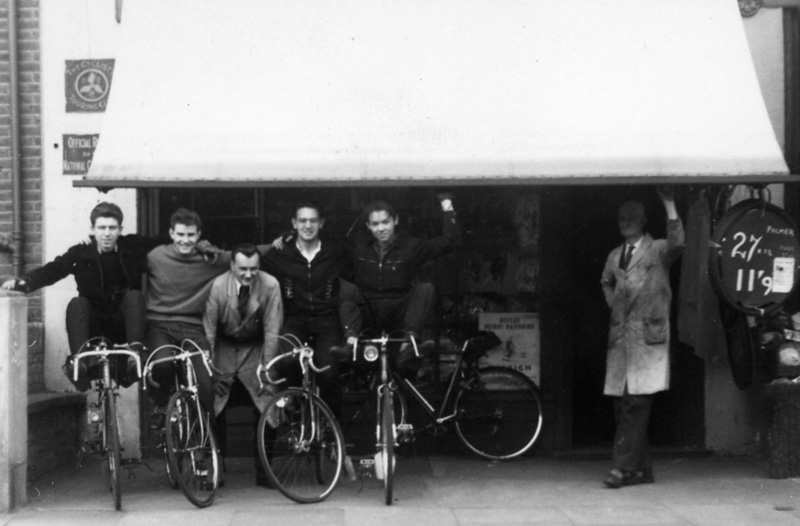Cooper, J J
Posted: Tuesday 02nd June 2020
The Upton was the trademark given to frames (cycles and tandems) built by J.J Coopers of 137 Plashet Road, East London. The local area is known as Upton Park and, as is well known, West Ham FC play nearby.
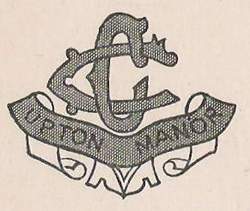
JJ Cooper himself founded the Upton Manor C.C. in 1924. In addition he rode with other East London Clubs such as the Ace and Warren Roads CC’s.
The shop existed from 1923/4 to 1965 (see image left of shop in the 1920s). Prior to opening the shop he had worked as an engineer and before that at tea importers. Profoundly deaf which exempted him from call up during World War One. The shop occupied two adjacent buildings but as a result of the blitz resumed until its closure as a single shop. It is the classic example of a one-man business, the only other employees being members of the family. When Cooper died in 1965 the shop ceased trading and the name was never passed on.
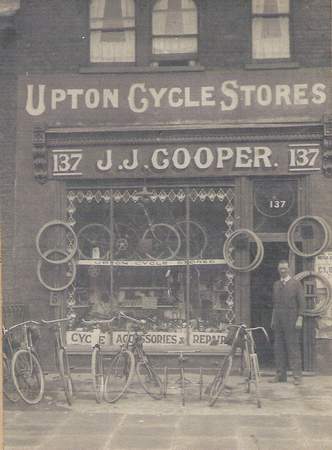
JJ (John James), known as Jack, was born in 1884 in East London. He joined the CTC in 1897, becoming a life member. He was a very keen club cyclist, a fact noted in a piece on the shop in the 27th November 1935 edition of ‘Bicycling News and Motor Trader’. He remained a keen cyclist all his life despite a serious hip injury in 1941. His daughter recalls Christmas lunch delayed to allow JJ to have his Christmas day ride.
He had an interest in veteran cycles and amassed a collection that included Ordinaries, a Boneshaker, a Bantam, and a Dursley. These were regularly ridden by JJ and other members of the Upton Manor. One such occasion in the early 30’s which became an annual event was a ride from the shop to Buckhurst Hill near Epping Forest on Boxing Day. The collection was sold in the early 60’s for the sum of £50 to the founder of the Harlow Cycle Museum. Prior to opening the shop he had worked as an engineer.
All frames were built by Jack. There was a forge in the basement below the shop. Tubing and lugs were obtained from Brown Brothers in Great Eastern Street and he had a good relationship with another local firm, Constrictor, whose parts he often fitted to cycles. Sturmeys (often FWs) and Williams C34 were pretty much standard fittings. Jack cut the lugs himself and the enamelling was done by Saunders in Leytonstone. All frames were built individually and there was no catalogue. Jack had strong views about frames being the right size for the rider – he disliked a large amount of seat post showing. This went against the trend for much of the inter-war period of having as small a frame as possible.
JJ also invented a quick release for Resilion brake blocks to facilitate swift wheel removal and replacement something which could be awkward with type of brake. Unfortunately he did not patent this innovative idea. In 1965 when JJ died and the business closed he left savings of £87 .

Design remained consistent: comparing a 1939 frame with one built in the 50’s the overall design and lug work is similar, although a frame built in the early 60’s had Nervex lugs. Pre and post war 531 was used and the majority of cycles were black. The head and set transfer was a very attractive figure in white, similar to Eros on a winged wheel. Earlier transfers have the words “supplied by” and then the address. ‘The Upton’ in script completes the transfers on the down tube .The first two letters of the frame number (on left rear drop out and steerer) is the year, followed by the build number for that year.
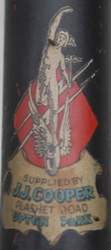
Extract from Bicycling News and Motor Review 27 November 1935:
“Here we have what is almost a rara avis nowadays, an agent in the person of Mr Cooper who is as enthusiastic about riding as selling a bicycle; consequently he knows what his customers, kindred spirits, require in the way of a mount, and is thereby enabled to cater for them with his justly famous Upton machines. They embody all the best features and are first-quality lightweights, built on the premises, in both single and tandem types. The best and lightest accessories are stocked – Constrictor specialities, Bayliss-Wiley featherweight hubs, etc., besides oilskins, touring bags and other necessary accoutrements for club riders. BSA and Standard machines are sold, and these, with the Upton make a fine show in the capacious windows. Mr Cooper is a repairer to the C.T.C and N.C.U., also a member of the N.A.C.T. and the L.M.A., sufficient qualifications for what is exclusively a cycle business.”
My thanks to JJ’s daughter Margaret Cooper for much of the above information and the image of the shop.
Note the start at 5.01 a.m. in order to get the event run and finished before normal living souls would be about. This was the norm at the time (1935) when time-trialling and any other racing on the highway was under threat from banishment.
The governing body, the NCU, created rules designed to keep time-trials hidden away from view as much as possible, hoping that there would be no opposition to events that people weren’t aware of.
Posted: Tuesday 02nd June 2020
Contents
This article appears in the following categories.
Upcoming Events
Whether you are looking for a gentle social meet up, or a 100-mile ride browse the community’s upcoming events and plan your next weekend outing.


